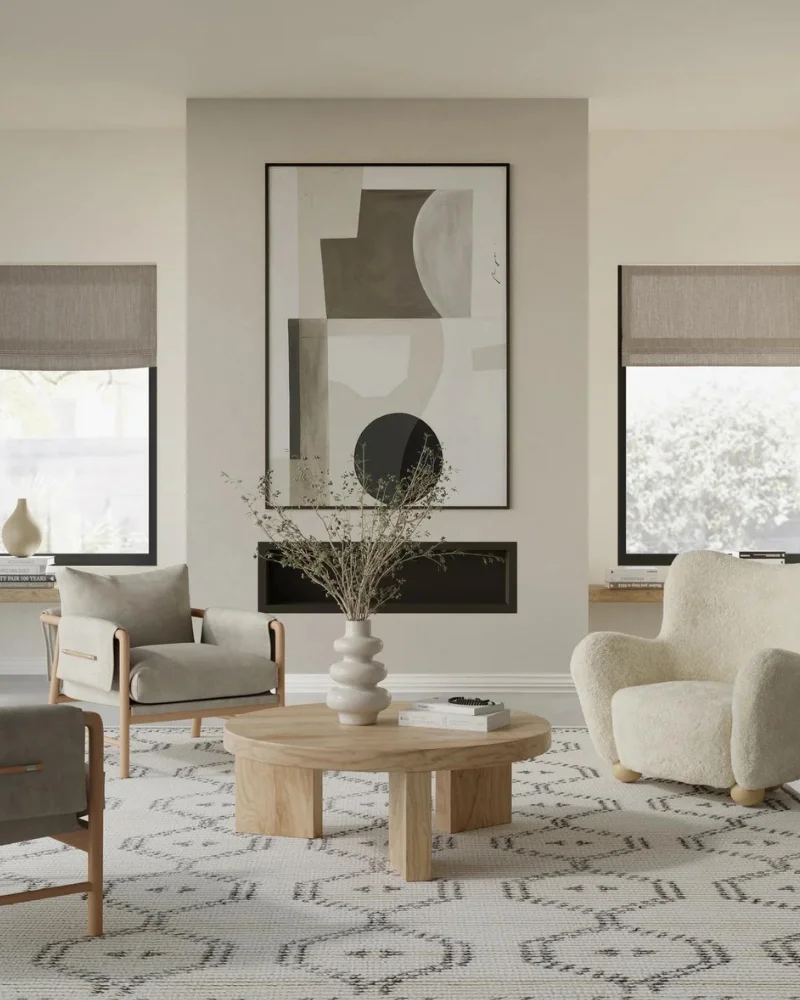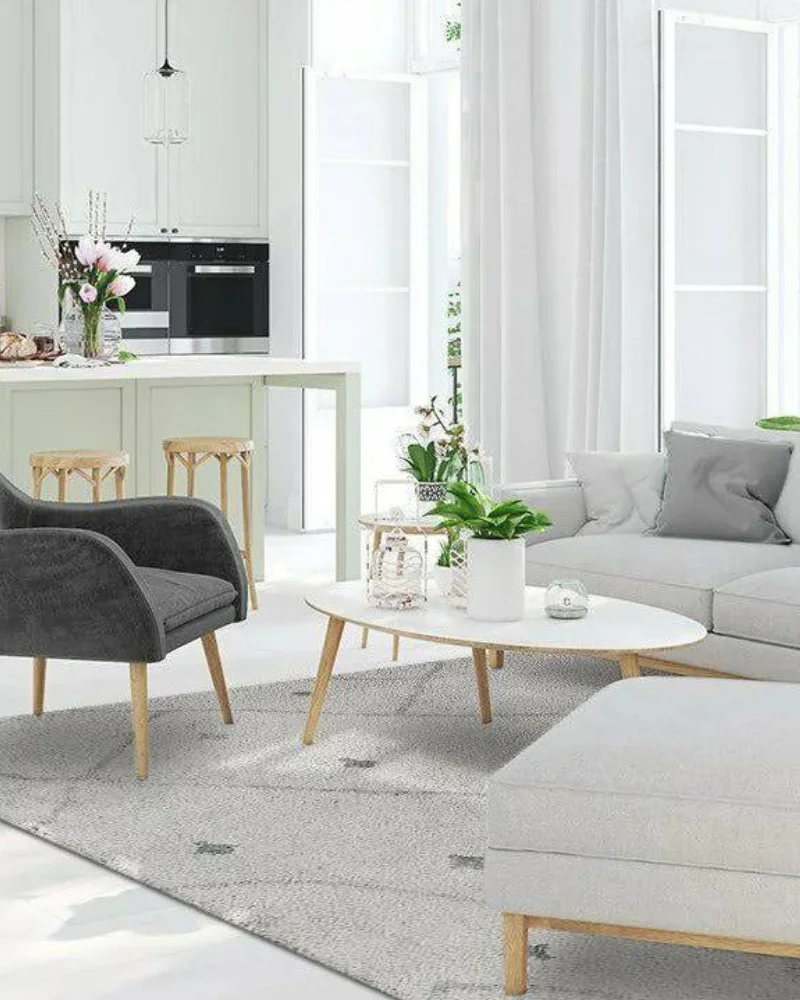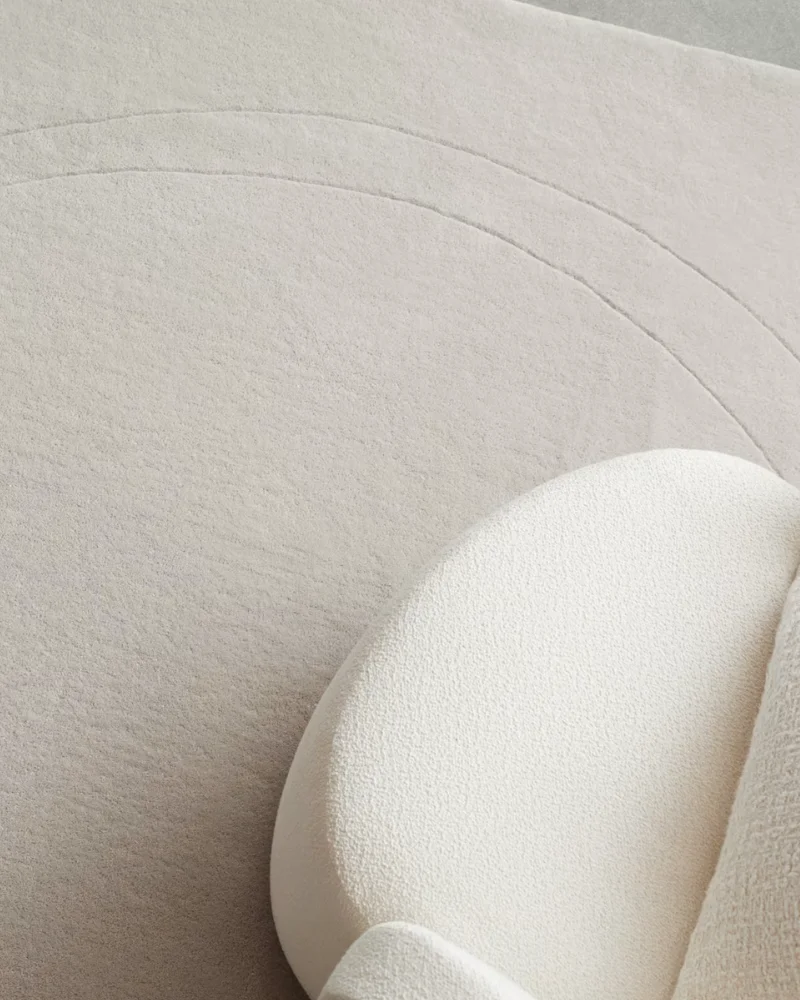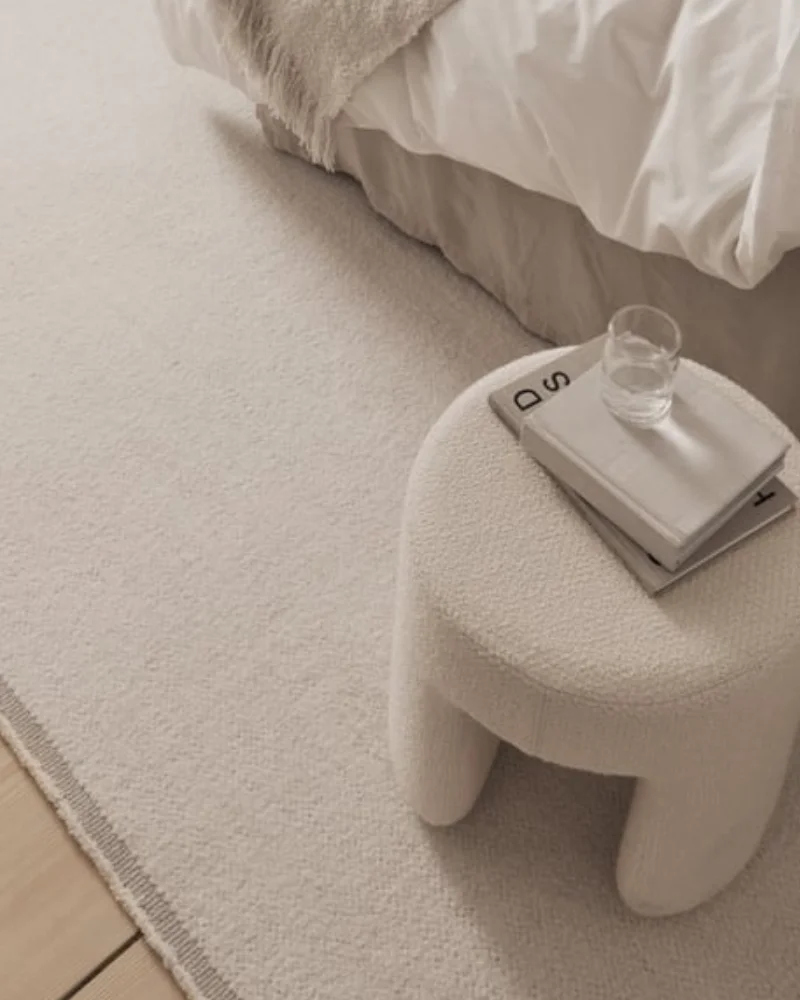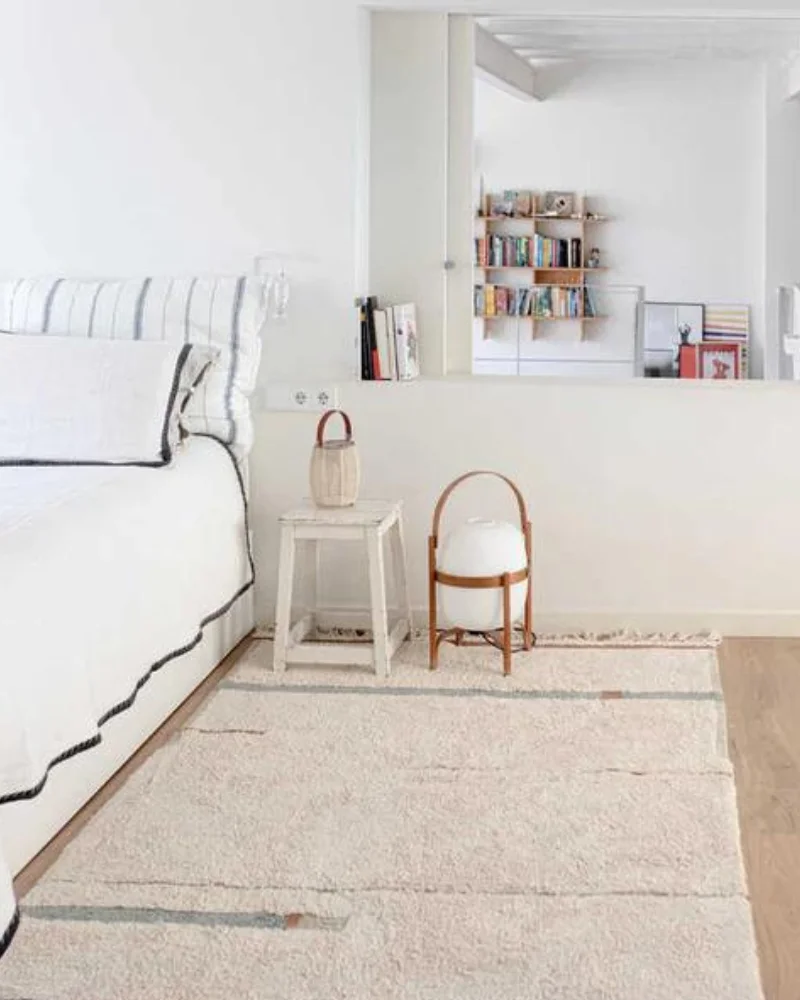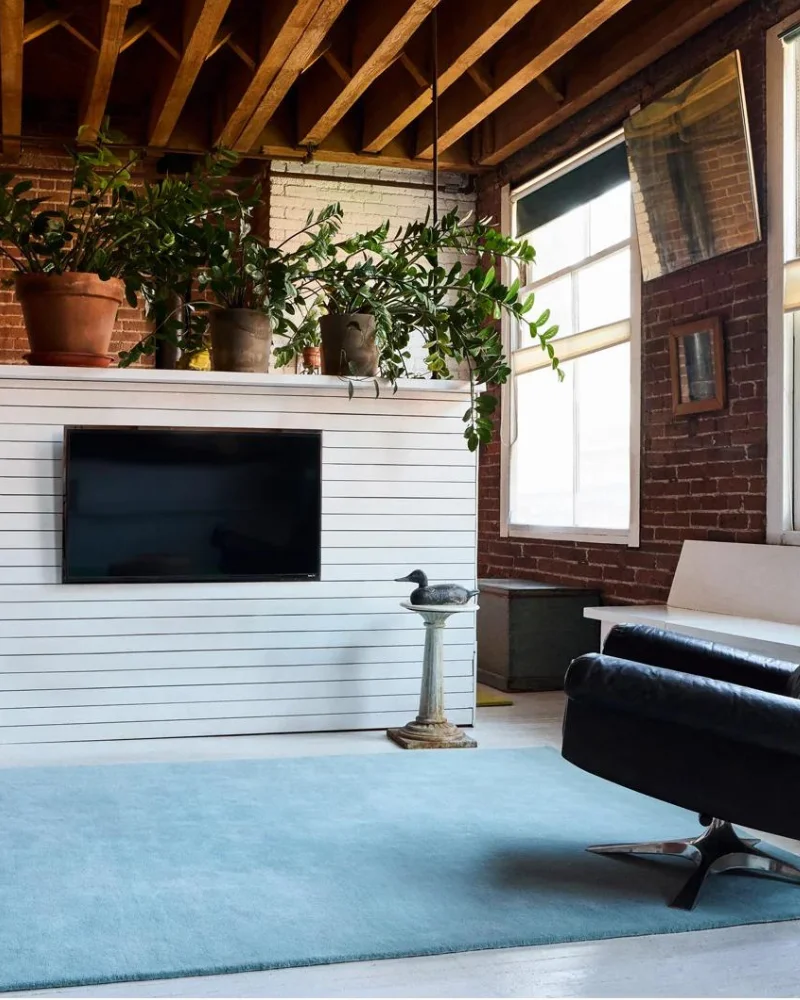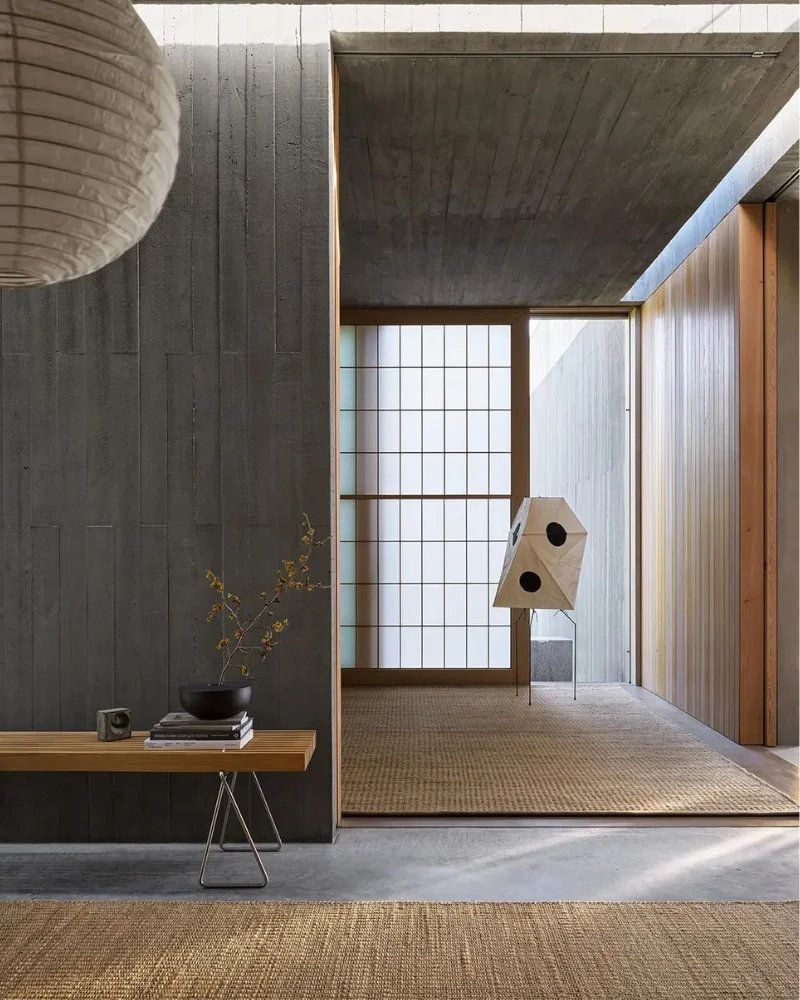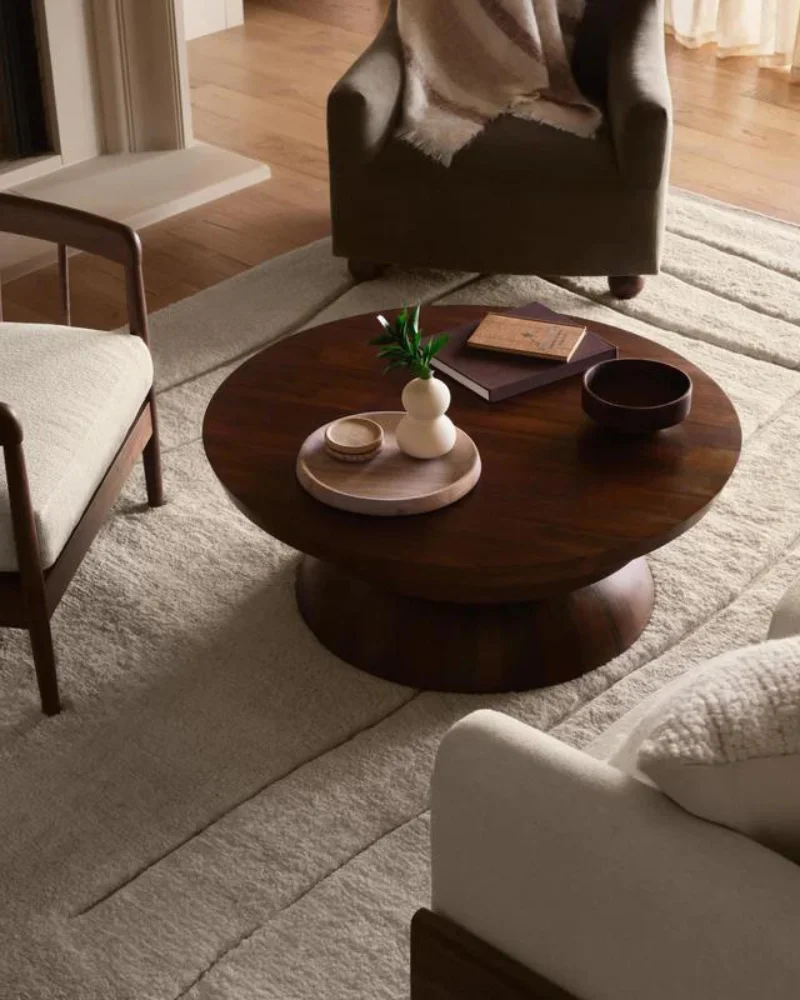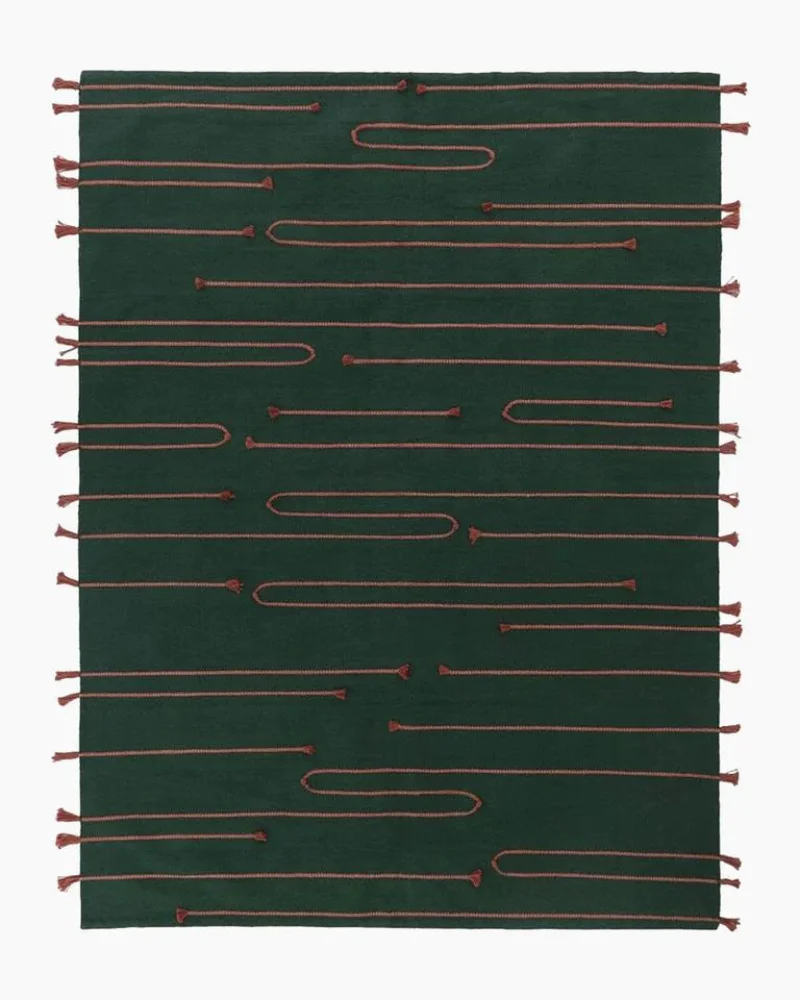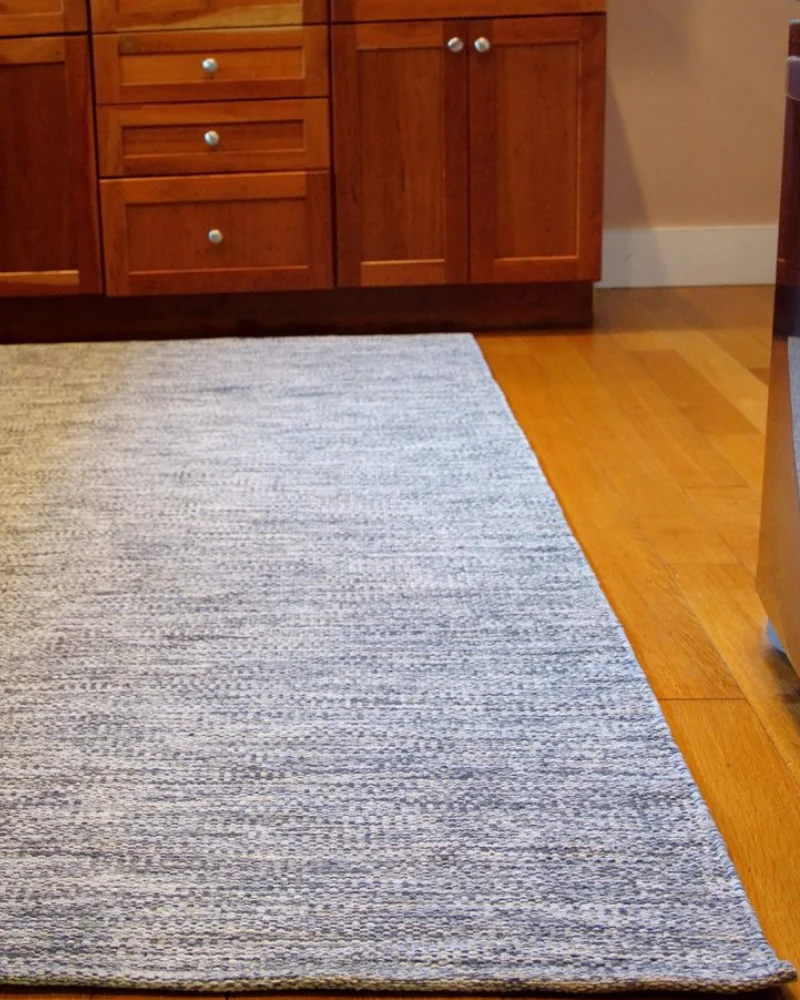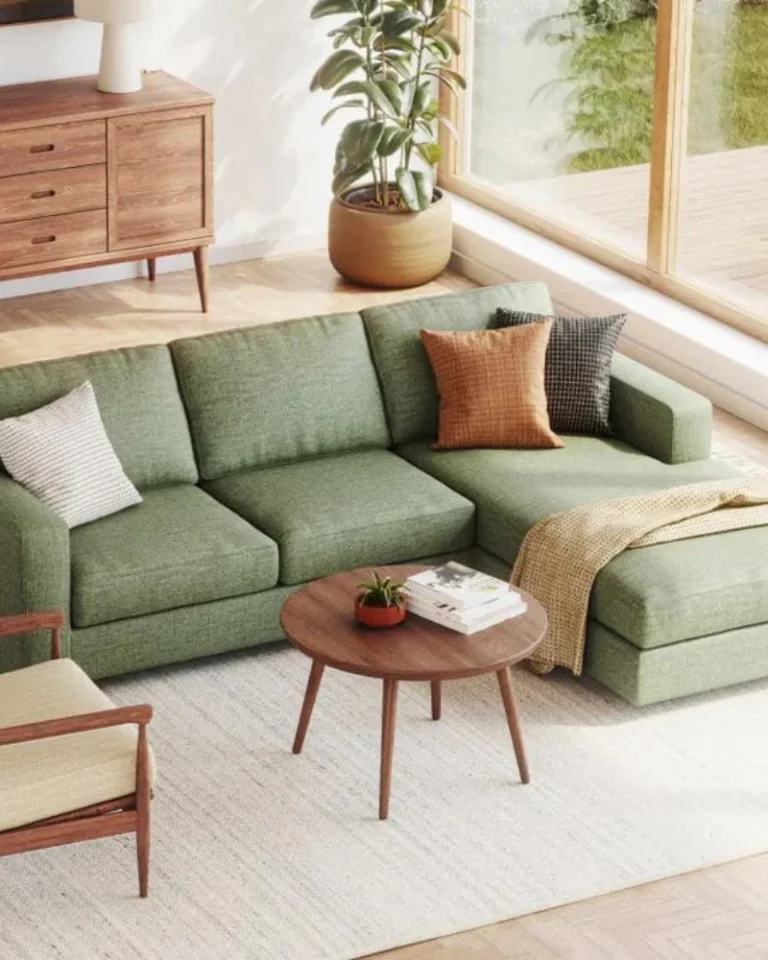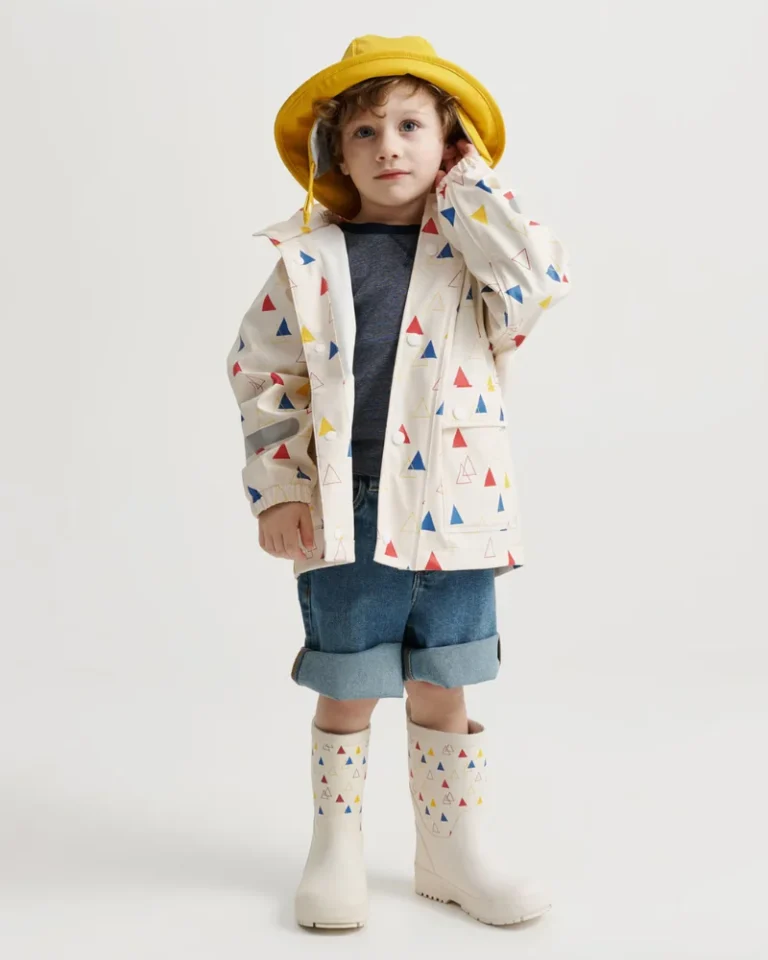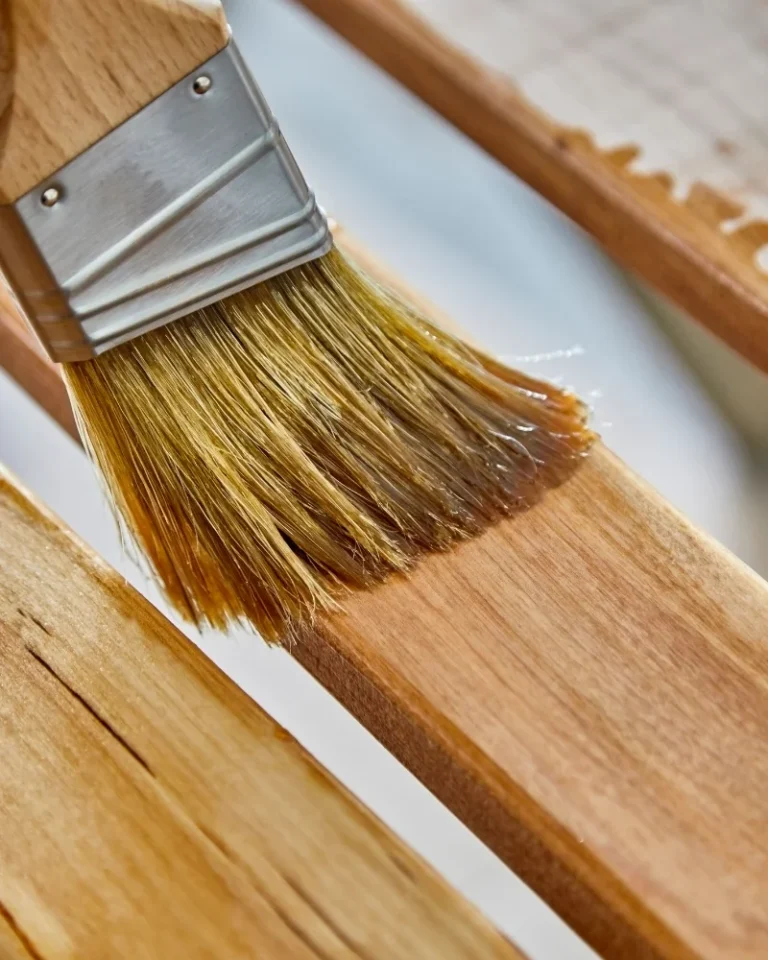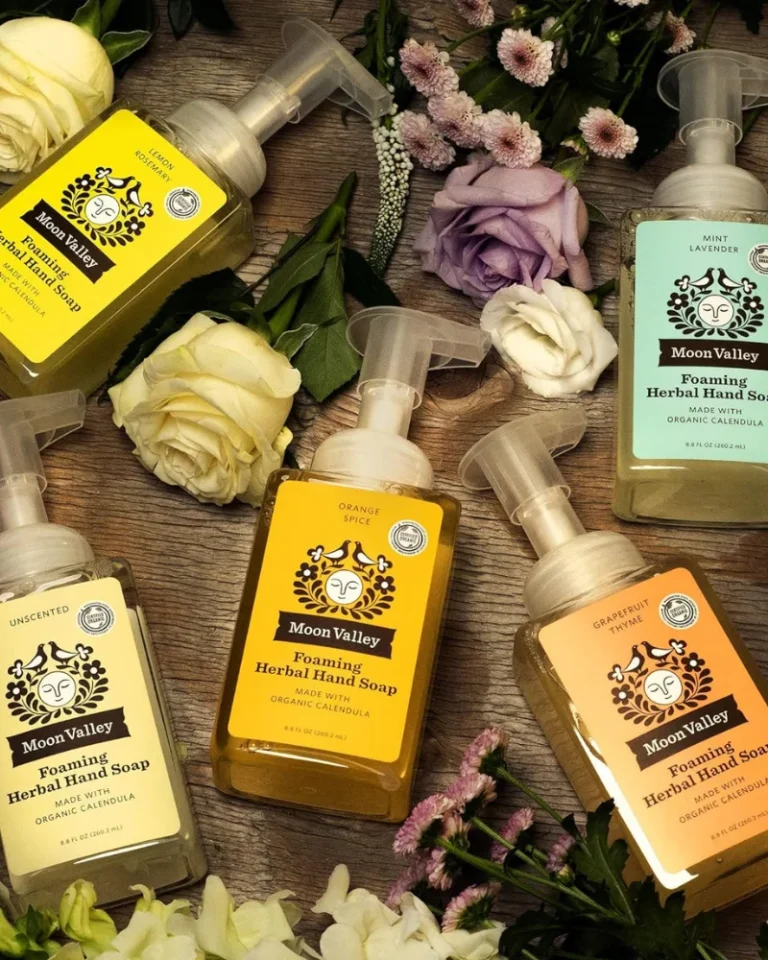This post may contain affiliate links. By browsing this website, you agree to our disclaimer, privacy policy, and terms of use.
You might not know it, but not all rugs are created equal. Many of the rugs out there are harboring some nasty chemicals that can trigger congestion, allergies, and even serious long-term health problems that can wreak havoc on your central nervous system and more.
That’s why it’s so important to pay attention to the materials in your rugs! When you choose non-toxic organic rugs – you are choosing rugs crafted from natural fibers, free from the synthetic materials and harmful chemicals often found in conventional rugs.
Lucky for you, the THC team of experts has tried and tested some of the best organic rugs that we could get our hands on to bring the best organic rugs for every room of your home.
If you’re ready to learn more, keep reading! We’ll explore what sets organic rugs apart from their conventional counterparts.
Hopefully, by now, we’ve convinced you why going organic when it comes to your rugs is such a great thing!
Now we’re excited to share some of our top choices when it comes to organic, sustainable, and environmentally healthy rugs.
Whether you’re looking for something plush for your living room, or durable for your high-traffic areas like your dining room or kitchen, we have an option for every indoor need.
Each of these companies has been selected for its quality, sustainability, and ability to transform any room into a healthier, more stylish space.
Founded by a visionary woman, Loomy has carved a niche in the rug industry by melding traditional craftsmanship with modern sustainability.
Loomy partners with indigenous communities and skilled artisan weavers from around the world to preserve age-old weaving techniques.
Each Loomy rug is handcrafted in small batches, so not only are you getting a high-quality rug, but this method also helps to significantly cut down waste.
On top of that, their manufacturing process is “closed-loop”, for minimal environmental impact.
All of Loomy’s rugs are made with natural and recycled fibers, all of which are OEKO-TEX certified and colored with low-impact dyes.
You can find rugs made from ethically sourced New Zealand wool, jute, sisal, hemp fabric, viscose, banana silk, and even upcycled plastic bottles.
Whether you’re looking for organic outdoor rugs, indoor rugs, pet-friendly options or unique vintage pieces, Loomy has an option for you.
Price
$398 – $798
Materials
Wool, jute, sisal, hemp fabric, viscose, and banana silk, upcycled plastic bottles
Notable Features
Ethically produced by Indigenous artisan weavers | Biodegradable | Eco-friendly | Recycled | Plastic Free
Organic Weave was founded by Linda Alexanian after witnessing the prevalence of child labor in India’s rug industry.
Linda created Organic Weave on a mission to revolutionize the rug industry, aiming to eliminate unethical labor practices and produce environmentally responsible rugs.
Today, all of Organic Weave’s rugs have earned the Goodweave certification, which underscores their commitment to social fairness and ethical labor practices.
Their rugs are also GOTS certified, made without harmful chemicals, and under environmentally conscious conditions. Beyond that, Organic Weave uses FSC-certified natural rubber latex on their hand-tufted rugs.
Emphasizing customization and quality, Organic Weave offers rugs that are typically made to order.
They aim to ensure that each rug meets your exact specifications. You can choose from various sizes, pile heights, and patterns.
You can also rest easy knowing all of their rugs are free from stain repellents, fire retardants, and other toxic chemicals.
Price
starting at $1,549
Materials
GOTS-certified organic cotton and wool
Notable Features
Custom rug options | Natural dyes | Chemical-free processing | Sustainable sourcing | Ethical labor practices
Just like the rest of their bedding and home goods, Parachute’s rugs epitomize the luxury of simplicity.
All of Parachute’s rugs are crafted from materials like OEKO-TEX-certified cotton, jute, and wool, without any harmful chemicals or undesirable synthetic materials.
In addition to being OEKO-TEX certified, Parachute rugs embrace other sustainability credentials like ClimateNeutral and GOTS certification.
Their design philosophy focuses on enhancing the natural appeal of the materials without overwhelming a space, perfectly aligning with minimalist decor.
They are Craftmark certified, signifying that they are handmade by artisans in India.
With their clean lines and understated elegance, these rugs are more than just a floor covering, they are a statement of style.
Price
$150 – $1,500
Materials
Wool, Cotton, Jute, Silk
Notable Features
Hand-loomed, flat-woven, reversible, durable
Nordic Knots, rooted in the heart of Stockholm, brings the effortless elegance of Scandinavian design right into your bedroom.
Each rug from Nordic Knots is handwoven using fine European wool. They feel so luxurious underfoot! And they look fantastic too!
Nordic Knots stands firm in its commitment to ethical practices, proudly bearing the GoodWeave certification.
This guarantees that all rugs are crafted by adult artisans only, supporting responsible manufacturing and combating child labor in the industry.
Understanding the importance of the perfect match for your home, Nordic Knots offers the option to order a sample size before making a full commitment.
This unique feature allows you to see and feel the rug in your own space, ensuring it complements your decor and meets your expectations before you finalize your purchase.
Price
$49 to $2,995
Materials
Wool
Notable Features
Hand-knotted, hand-loomed, eco-friendly, Fair Trade certified
Best Organic Washable Rugs
Lorena Canals rugs are a fan favorite around here. They offer a stunning array of organic area rugs that are handmade by skilled artisans and are perfect for adding a splash of color and warmth to any bedroom.
These rugs are renowned for their softness and comfort, made from 100% natural cotton, and ideal for any room where comfort is key.
These beautiful rugs are produced using recycled and natural fibers like cotton and wool, alongside non-toxic dyes, ensuring every rug supports a no-waste production philosophy.
Lorena Canals makes only organic washable rugs, so they are exceptionally convenient for maintaining a clean and fresh look.
Also, check out their Rugcycled line which is crafted entirely from recycled materials sourced from their own factory.
This innovative approach not only reduces waste but also showcases the possibilities within circular manufacturing processes.
Price
$95–$395
Materials
Recycled fabric | Organic cotton | Organic wool
Notable Features
Machine washable | Non Toxic | Complies with all safety and quality regulations for children (ISO 9001, ISO 14001, and ISO 45001 certified)
Sabai combines locally sourced craftsmanship with global ethical standards, offering a product that’s both high-quality and conscientiously made.
Sabai’s Field Rug proudly made in the USA, is a quintessential cozy addition to any bedroom.
This rug is perfect for bringing a warm and inviting atmosphere to your room. It’s crafted from sustainably harvested jute from Bangladesh and ethically sourced wool from New Zealand.
Each Field Rug is made-to-order using a closed-loop process, highlighting Sabai’s commitment to circularity and environmental responsibility. T
his method ensures minimal waste and maximizes resource efficiency. We also love that these rugs are washable since rugs in bedrooms can tend to collect dust and other allergens over time.
Beyond their cornerstone Field Rug, Sabai also offers a range of eco-friendly and affordable rug options that look great and are easy to maintain.
They offer that perfect combination of style and comfort, great for any room in your home.
Price
$200 – $1,000
Materials
Recycled Plastic Bottles | Solution-Dyed Yarn | Jute
Notable Features
Low-pile | Eco-friendly | Easy to clean | Organic rugs made in the USA
If you’re all about great interior design, we think you’re going to love the rugs from Cold Picnic. Cold Picnic is all about bringing art into your home.
Each rug in their eclectic collection is inspired by a unique blend of influences, from national parks to classic films.
The result is a series of abstract rugs that don’t just fill a space but transform it into a focal point of artistic expression. Each piece tells a story. A great conversation starter for dinner parties!
Designed in-house by the founders in their Brooklyn studio, Cold Picnic’s rugs are a testament to creativity and craftsmanship.
After the design phase, the rugs are handmade by skilled artisans in India, ensuring each rug receives a personal touch.
You can also choose to get a made-to-order rug that is custom-matched to your style and color preferences. What a cool way to own a piece of woven art that truly reflects your personal aesthetic!
Cold Picnic rugs are all GOTS-certified and crafted from natural materials like wool, jute, and hemp.
Price
$80 – $1,150
Materials
New Zealand wool, bamboo silk, or hemp
Notable Features
Artisan-made | Hand-tufted | Natural dyes | 100% solar-powered production
Armadillo & Co. is a distinguished American/Australian brand, loved for its exquisite handwoven rugs that effortlessly elevate a room.
Each Armadillo rug is a masterpiece of traditional craftsmanship, featuring an Indo-Nepali hand-knotted Tibetan weave.
This meticulous process involves hand-spinning the yarn, which adds to the unique texture of the rugs. Their Mojave collection is made entirely from jute and is great for the dining room.
Their offerings range from organic wool to 100% jute collections, each crafted using beautifully vibrant natural dyes.
These rugs are not only visually stunning but are also designed to withstand the demands of everyday life, whether it’s food spills, wine spills, or tracked in dirt.
In line with their commitment to transparency and customer trust, all Armadillo rugs come with a Declare Label.
This label provides detailed information about the origin, materials, and manufacturing processes of each rug, so you can fully understand and appreciate the story behind your purchase.
Price
$300 – $3,000
Materials
Hand-spun Wool, Hand-loomed Cotton, Jute, Silk
Notable Features
Hand-knotted, hand-loomed, eco-friendly, Fair Trade certified
The Citizenry brings the world to your doorstep, offering a range of stunning rugs with unique globally inspired designs. Beyond just dining room decor, these rugs are a celebration of cultural heritage and contemporary design.
The Citizenry rugs are all Fair Trade certified and made from eco-friendly materials like recycled wool and organic cotton.
Produced in small batches, these rugs feature bold, modern patterns that are sure to be a showstopper.
The impeccable handwoven quality of each rug showcases the artistic skill and meticulous care of the artists and designers.
The Citizenry is dedicated to improving the livelihoods of their artisan partners around the globe.
They go above and beyond, offering wages twice the standard Fair Trade requirement to their partners.
This approach not only enhances the quality of the rugs but also ensures that each piece is ethically produced.
Price
$300 – $3,000
Materials
Wool, Silk, Jute, Hemp
Notable Features
Hand-knotted, hand-loomed, eco-friendly, Fair Trade-certified
Kiliim is a Cairo-based company dedicated to breathing new life into the ancient craft of kilim weaving.
Partnering with the town of Fowa, a historical center for kilim weaving, this rug company is countering the decline of traditional weaving caused by the rise of machine manufacturing.
By focusing on this traditional art form, Kiliim plays a crucial role in preserving and revitalizing a pivotal part of Egyptian cultural heritage.
Kiliim rugs are extremely hardy, and can easily stand up to daily use in the kitchen. All of their rugs are made from wool, Egyptian cotton, and jute which age beautifully with use.
Each rug from Kiliim is a canvas of creativity. They blend Art Deco influences with pharaonic forms, brought to life in vibrant color.
These eye-catching colorful designs that define Kiliim’s rugs are achieved through the use of colorfast natural dyes, so you don’t need to be worried about spills.
That flat woven design makes it easy to vacuum up crumbs and other food spills.
Price
$200 – $1,000
Materials
Cotton, Wool
Notable Features
Hand-woven, flat-woven, eco-friendly, Fair Trade certified
Hook & Loom celebrates traditional crafting techniques, offering a selection of loom-hooked, flatweave, and braided rugs that will make a lovely addition to your kitchen.
This company is all about putting your safety first. They do not use any chemical flame retardants, harmful detergents, pesticides, off-gassing latex, or plastic backing in any of their rugs.
What you will find instead are undyed natural wool and GOTS-certified organic cotton rugs.
Hook & Loom holds strong to their “No dyes. Ever.” statement.
They are committed to maintaining the natural color of the wool and showcasing the beauty found in the variance of different animals’ coats.
These colors range from off-white and grey to rich browns, providing a natural palette that looks beautiful in any kitchen.
The flatweave rugs at Hook & Loom are designed to be reversible, doubling the usability and extending the life of each rug. This feature is particularly beneficial, allowing for even wear in the kitchen.
Price
$90–$1,465
Materials
Organic wool | Recycled cotton | GOTS-certified organic cotton
Notable Features
Sustainable materials | GOTS-certified | Fair Wages | No dyes | Reversible
This has been your complete guide to the best organic rugs for 2024!
Choosing an organic rug for your home goes way beyond just aesthetic appeal.
An organic rug is better for your health, contributing to better air quality and reducing your exposure to harmful chemicals and allergens. But going organic doesn’t mean you need to sacrifice style for safety.
There are so many beautiful organic rug options out there. Whether you are looking for the rustic charm of jute, the luxurious softness of organic wool, or vibrantly dyed natural cotton, you’re sure to find the perfect rug to meet all of your needs.
While opting for an organic rug may be a bit of an investment upfront, it’s a great step towards creating a healthier and more sustainable home for you and your family. Let’s get ready to embrace a future where our home décor harmonizes with our health and the well-being of the environment.
